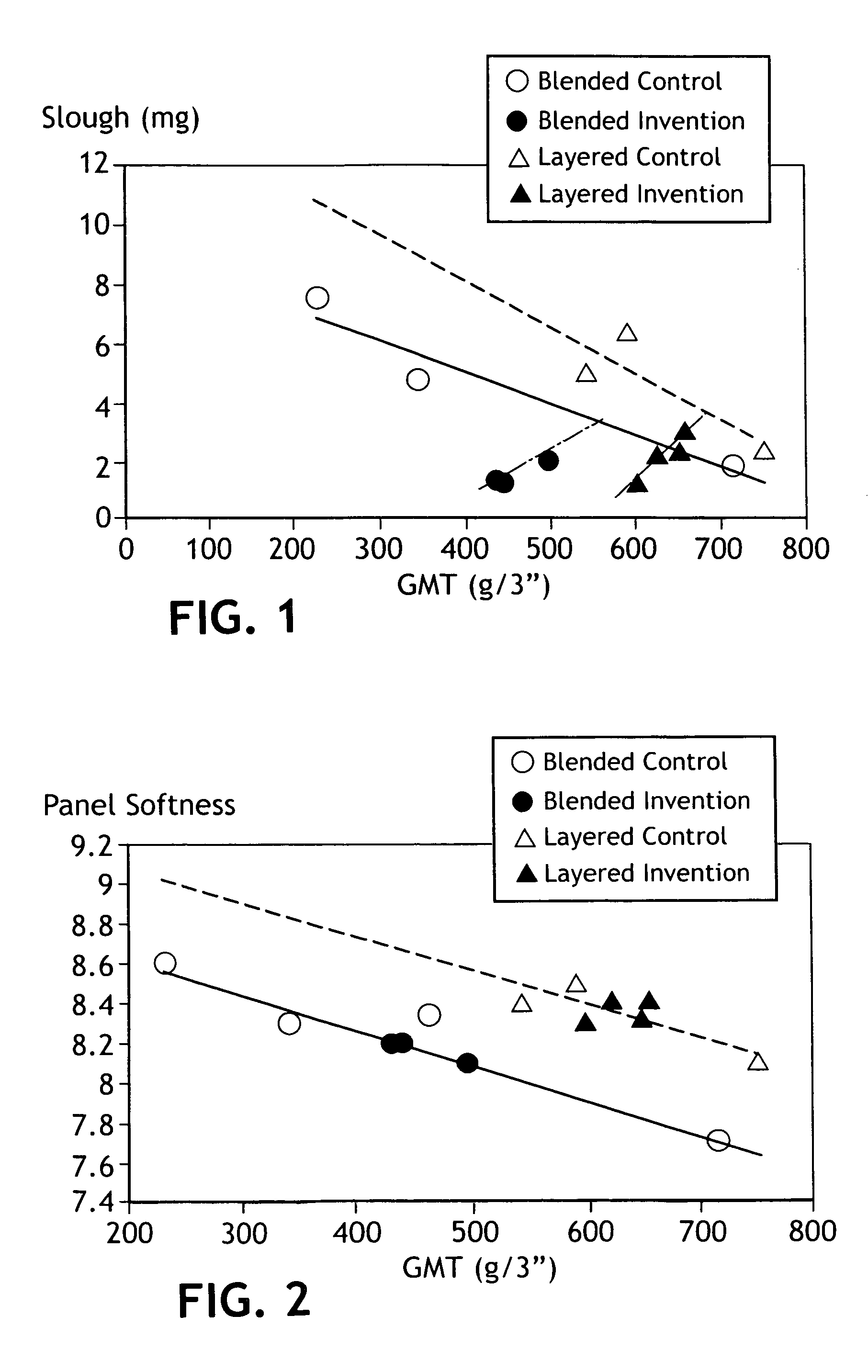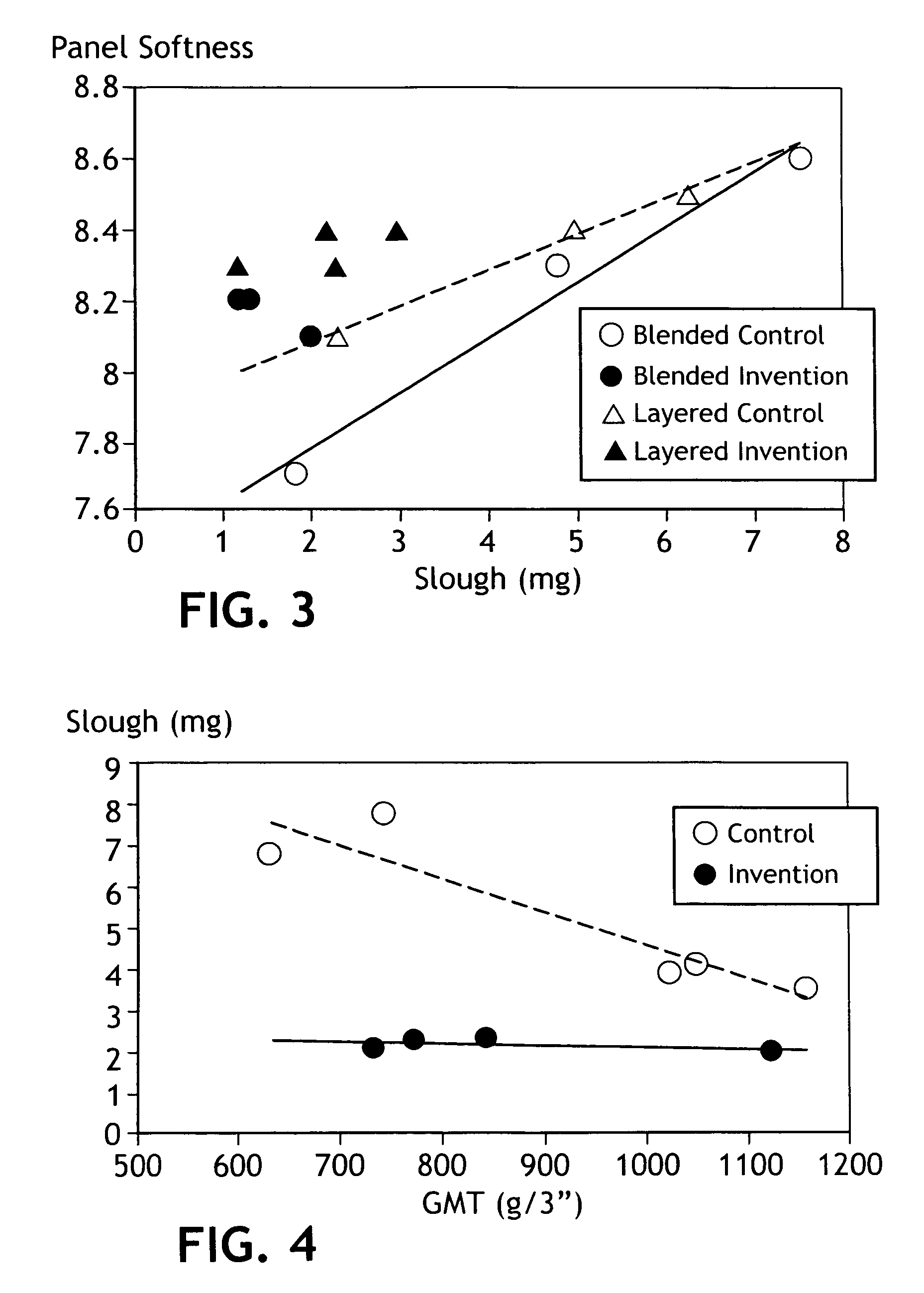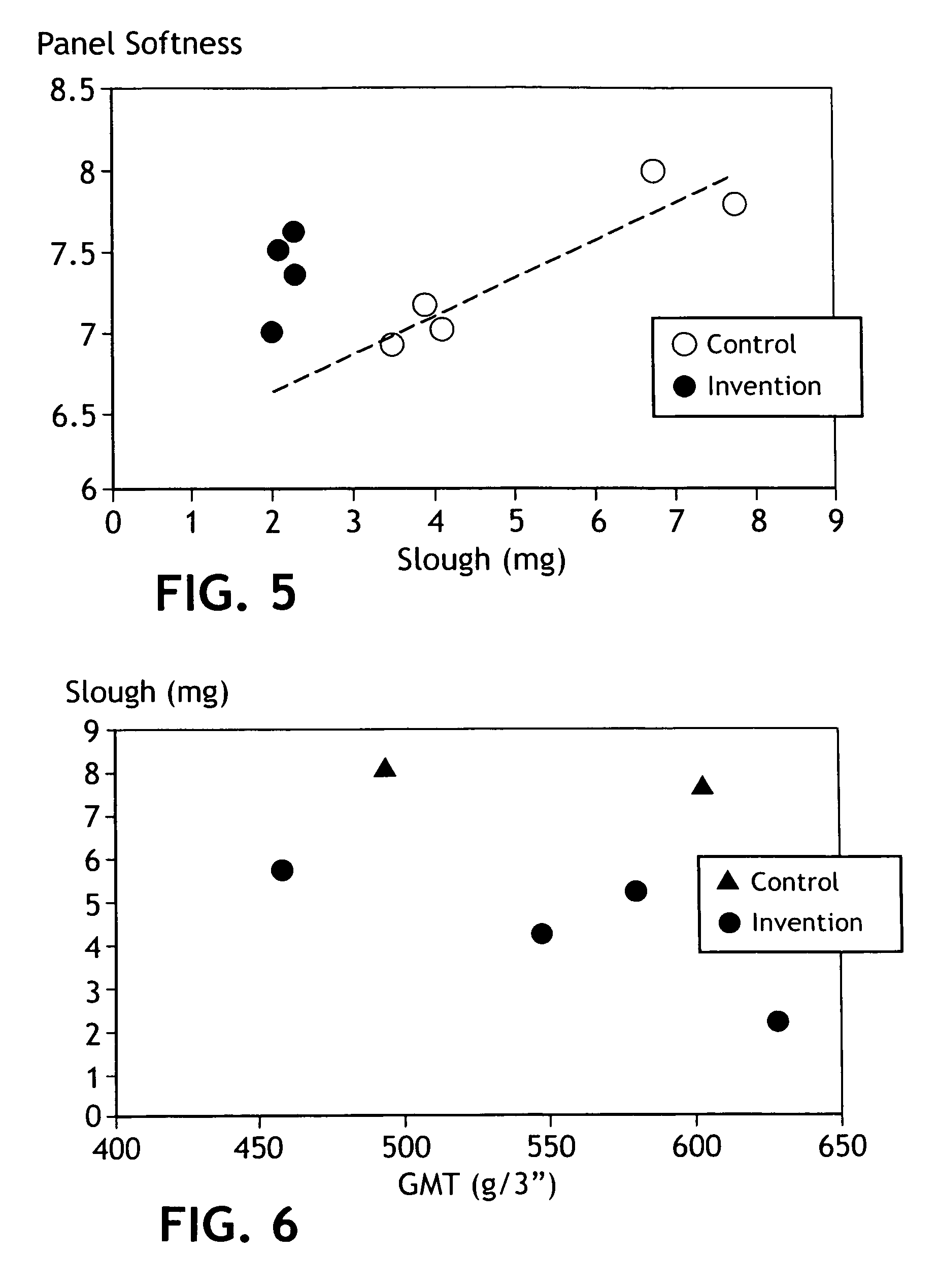Method of making low slough tissue products
a tissue product and low slough technology, applied in papermaking, non-fibrous pulp addition, coatings, etc., can solve the problems of reducing the stiffness of the tissue sheet, reducing the tensile strength, and hydrogen bonding, and achieves low viscosity and application relatively quickly
- Summary
- Abstract
- Description
- Claims
- Application Information
AI Technical Summary
Benefits of technology
Problems solved by technology
Method used
Image
Examples
example 1
[0099]Example 1 demonstrates the preparation of a blended (non-layered) tissue basesheet. The blended tissue basesheet was made according to the following procedure. About 45.5 pounds (oven dry basis) of eucalyptus hardwood kraft fiber and about 24.5 pounds (oven dry basis) of northern softwood kraft fiber were dispersed in a pulper for about 30 minutes at a consistency of about 3%. The blended thick stock pulp slurry was refined for 10 minutes and then passed to a machine chest where the thick stock pulp slurry was diluted to a consistency of about 1%. Kymene 6500, a commercially available PAE wet strength resin from Hercules, Inc., was added to the pulp slurry in the machine chest at a rate of about 4 pounds of dry chemical per ton of dry fiber. The stock pulp slurry was further diluted to about 0.1 percent consistency prior to forming and deposited from an unlayered headbox onto a fine forming fabric having a velocity of about 50 feet per minute to form a 17″ wide tissue sheet. T...
example 2
[0101]Example 2 demonstrates use of a conventional wet end debonder for preparing soft tissue products. The blended tissue basesheet used in this example was made in general accordance with Example 1. The Prosoft TQ-1003 was diluted to 1% solids with water prior to addition to the machine chest. The diluted Prosoft TQ-1003, a cationic oleylimidazoline debonder, commercially available from Hercules, Inc. was added to the machine chest. The machine chest was then allowed to stir for about 5 minutes prior to start of the tissue sheet formation. The amount of debonder to total tissue basesheet fiber on a dry weight basis was about 0.1%. The finished blended tissue basesheet was then converted into a 2-ply facial tissue product with the dryer side of each ply facing outward.
example 3
[0102]Example 3 demonstrates use of a conventional wet end debonder for preparing soft tissue products. The blended tissue basesheet used in this example was made in general accordance with Example 1. The Prosoft TQ-1003 was diluted to about 1% solids with water prior to addition to the machine chest. The diluted Prosoft TQ-1003, a cationic oleylimidazoline debonder, commercially available from Hercules, Inc. was added to the machine chest. The machine chest was then allowed to stir for about 5 minutes prior to start of the tissue sheet formation. The amount of debonder to total tissue basesheet fiber on a dry weight basis was about 0.2%. The finished blended tissue basesheet was then converted into a 2-ply facial tissue product with the dryer side of each ply facing outward.
PUM
| Property | Measurement | Unit |
|---|---|---|
| mole ratio | aaaaa | aaaaa |
| mole ratio | aaaaa | aaaaa |
| mole ratio | aaaaa | aaaaa |
Abstract
Description
Claims
Application Information
 Login to View More
Login to View More - R&D
- Intellectual Property
- Life Sciences
- Materials
- Tech Scout
- Unparalleled Data Quality
- Higher Quality Content
- 60% Fewer Hallucinations
Browse by: Latest US Patents, China's latest patents, Technical Efficacy Thesaurus, Application Domain, Technology Topic, Popular Technical Reports.
© 2025 PatSnap. All rights reserved.Legal|Privacy policy|Modern Slavery Act Transparency Statement|Sitemap|About US| Contact US: help@patsnap.com



